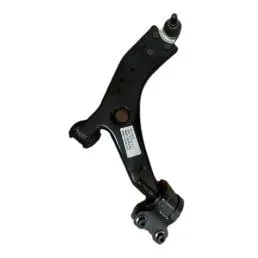
-
 Afrikaans
Afrikaans -
 Albanian
Albanian -
 Amharic
Amharic -
 Arabic
Arabic -
 Armenian
Armenian -
 Azerbaijani
Azerbaijani -
 Basque
Basque -
 Belarusian
Belarusian -
 Bengali
Bengali -
 Bosnian
Bosnian -
 Bulgarian
Bulgarian -
 Catalan
Catalan -
 Cebuano
Cebuano -
 Corsican
Corsican -
 Croatian
Croatian -
 Czech
Czech -
 Danish
Danish -
 Dutch
Dutch -
 English
English -
 Esperanto
Esperanto -
 Estonian
Estonian -
 Finnish
Finnish -
 French
French -
 Frisian
Frisian -
 Galician
Galician -
 Georgian
Georgian -
 German
German -
 Greek
Greek -
 Gujarati
Gujarati -
 Haitian Creole
Haitian Creole -
 hausa
hausa -
 hawaiian
hawaiian -
 Hebrew
Hebrew -
 Hindi
Hindi -
 Miao
Miao -
 Hungarian
Hungarian -
 Icelandic
Icelandic -
 igbo
igbo -
 Indonesian
Indonesian -
 irish
irish -
 Italian
Italian -
 Japanese
Japanese -
 Javanese
Javanese -
 Kannada
Kannada -
 kazakh
kazakh -
 Khmer
Khmer -
 Rwandese
Rwandese -
 Korean
Korean -
 Kurdish
Kurdish -
 Kyrgyz
Kyrgyz -
 Lao
Lao -
 Latin
Latin -
 Latvian
Latvian -
 Lithuanian
Lithuanian -
 Luxembourgish
Luxembourgish -
 Macedonian
Macedonian -
 Malgashi
Malgashi -
 Malay
Malay -
 Malayalam
Malayalam -
 Maltese
Maltese -
 Maori
Maori -
 Marathi
Marathi -
 Mongolian
Mongolian -
 Myanmar
Myanmar -
 Nepali
Nepali -
 Norwegian
Norwegian -
 Norwegian
Norwegian -
 Occitan
Occitan -
 Pashto
Pashto -
 Persian
Persian -
 Polish
Polish -
 Portuguese
Portuguese -
 Punjabi
Punjabi -
 Romanian
Romanian -
 Russian
Russian -
 Samoan
Samoan -
 Scottish Gaelic
Scottish Gaelic -
 Serbian
Serbian -
 Sesotho
Sesotho -
 Shona
Shona -
 Sindhi
Sindhi -
 Sinhala
Sinhala -
 Slovak
Slovak -
 Slovenian
Slovenian -
 Somali
Somali -
 Spanish
Spanish -
 Sundanese
Sundanese -
 Swahili
Swahili -
 Swedish
Swedish -
 Tagalog
Tagalog -
 Tajik
Tajik -
 Tamil
Tamil -
 Tatar
Tatar -
 Telugu
Telugu -
 Thai
Thai -
 Turkish
Turkish -
 Turkmen
Turkmen -
 Ukrainian
Ukrainian -
 Urdu
Urdu -
 Uighur
Uighur -
 Uzbek
Uzbek -
 Vietnamese
Vietnamese -
 Welsh
Welsh -
 Bantu
Bantu -
 Yiddish
Yiddish -
 Yoruba
Yoruba -
 Zulu
Zulu
racing control arms
Understanding Racing Control Arms An Essential Component for Performance Cars
Racing control arms are crucial components in the suspension system of performance vehicles. These control arms, often referred to as A-arms or wishbones, are designed to connect the chassis of a car to its wheels, allowing for the necessary movement and control during high-speed maneuvers. Their design and material significantly impact the handling, stability, and overall performance of a vehicle, making them a focal point for many enthusiasts and professional racers.
One of the primary functions of racing control arms is to manage the alignment of the wheels. Proper alignment ensures that the tires make optimal contact with the road, enhancing grip and providing better feedback to the driver. High-performance control arms often feature adjustable camber, caster, and toe settings, allowing racers to fine-tune their suspension setup based on track conditions or driving preferences.
Material composition plays a vital role in the effectiveness of racing control arms. Unlike their factory counterparts, which are typically made from heavy steel or aluminum, racing control arms are often constructed from lightweight materials such as carbon fiber or high-strength aluminum alloys. This reduction in weight not only improves the car’s power-to-weight ratio but also enhances responsiveness in steering and suspension dynamics. Moreover, the use of advanced materials can increase durability, ensuring that the control arms withstand the stresses of competitive racing.
racing control arms

In addition to weight and material, the design of racing control arms has evolved to incorporate engineering advancements. Many modern control arms feature a more articulated geometry that allows for greater wheel travel, which is essential for maintaining traction over uneven surfaces. This adaptability is especially important in motorsports, where conditions can change rapidly and unpredictably.
Installation of racing control arms can significantly improve a vehicle’s performance, but it is not without its challenges. The process often requires precise adjustments and alignment to ensure that the new components work harmoniously with the existing suspension system. For best results, it is advisable to have the installation and setup performed by professionals who understand the intricacies of racing dynamics.
In conclusion, racing control arms are indispensable for anyone looking to enhance their vehicle's performance on the track. Their ability to improve handling, adjustability, and responsiveness makes them a worthy investment for serious racers and car enthusiasts alike. As technology advances, the design and materials used in control arms will continue to evolve, offering even more options for performance-driven drivers. Whether on a racetrack or winding roads, investing in high-quality control arms can be a game-changer for those seeking an edge in automotive performance.







